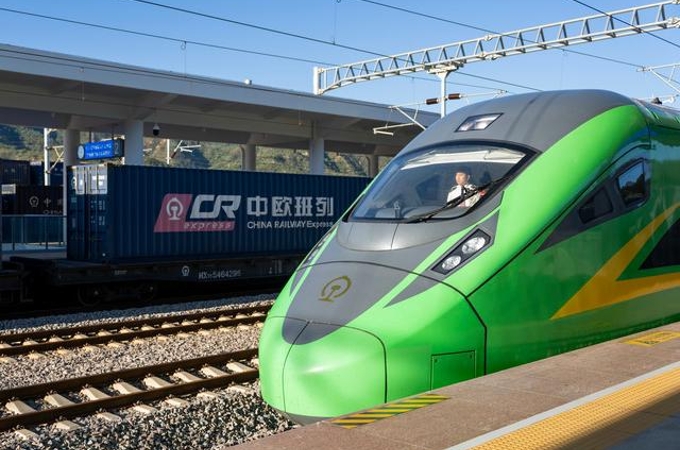
Ethnic Hani dancers on Lüchun's main street
Editor's note: Frank Hitman lives in Kunming for most of the year, but in the winter and summer, he works with locals in Honghe to organize unique experience tours from Kunming to Jinghong to the most remote places of southern Yunnan. For more information, visit his website: zoubatravel.com.
In late August, I cycled from Kunming to Lüchun (绿春), a county in the south of Honghe Hani Autonomous Prefecture. Honghe has been my favorite area in Yunnan for a while. I discovered Lüchun county on the bicycle last year and was blown away by what I encountered. Ever since, whenever I have the chance, I jump on a (motor)bike to visit friends and explore new places in these underappreciated lands. In August, I left Kunming on my bicycle to further investigate the area's logistics, make some contacts and find new undiscovered places.
Day One: Kunming – Lüchong (绿充), 125km
The plan was great. I would avoid Chenggong (呈贡) and its polluted, dusty roads in the south. Instead, I would leave Kunming in the northeast through Shuanglong (双龙), then cross the town of Dabanqiao (大板桥) to get to the old road from Kunming to Shilin (Kunshi Laolu, 昆石老路) Then I would cycle from Yangzonghai Lake (阳宗海) to Chengjiang (澄江). From there, I would make my way south along Fuxian Lake (抚仙湖) to Jianshui (建水).
Obviously, this plan completely backfired and my first day turned out to be a nasty test of perseverance. The trouble started in Shuanglong, where I made a right turn into a dusty dirt road that was supposed to lead to Dabanqiao. Sandwiched between an endless row of diesel trucks, completely confused by randomly bulldozed "roads" around the new airport, I nearly lost my mind before arriving in Dabanqiao.
Apparently, the road that I planned to take to Yangzonghai didn't exist and I found myself still hugging Kunming after nearly thirty frustrating kilometers on dirt roads when it started raining pretty heavily. Discouraged and despairing to finally get out of Kunming, I decided to cross Chenggong after all, just to get it over with. But it wasn't close to over.
To get from the Kunshi Laolu to Chenggong is a very tricky process. I arrived in one of those "new" areas with those horribly confusing network of endlessly manicured lanes leading to nowhere. As the rain was showering down from the sky, I was directed into a 10 kilometer detour by the equally oblivious army of gardeners, who where obviously just dropped there randomly straight from the countryside. Finally, I found Chenggong by biking through a garage and carrying the bike through a tea house, much to the amusement of local majiang players.
The road to Chengjiang is a left turn from the S102 which you follow from Chenggong, situated next to the highway exit. I found it very congested with trucks and the small climb and descent was far from enjoyable. When I arrived in Chengjiang I still felt the capital looming too close by and pushed on to Lüchong, a Chinese tourism resort which is not really worth visiting. I booked into a cheap enough hotel room (60 yuan), started recharging with optimism and pledged to always follow the main roads or take the bus out of Kunming on future cycling trips.
Day Two: Lüchong – Qujiang (曲江), 92km
Surprisingly, I started the ride along Fuxian Lake with fresh optimism. After 42 kilometers, I had an early lunch in my favorite donkey restaurant in Jiangchuan (江川).

Donkey butchering in Jiangchuan
From there, cyclists are allowed to cross the hill on the highway from Jiangchuan to Tonghai (通海). From Tonghai, the old road to Jianshui first descends into the warm and sleepy Dai village of Gaoda (高大). From there, the ride to the lively trading town of Qujiang is almost flat. I called it a day, checked into an agreeable 30 yuan hotel room, and had a delicious dinner with a friendly Hui family.
Day Three: Qujiang – Nansha (南沙), 130km
From Qujiang, I cycled slightly uphill to Jianshui for the next 45 kilometers. Over lunch, I was told some suspicious information about the road and elevation to Nansha. Some new friends at my lunch table informed me that the road to Potou (坡头) was going to be "flat", and that I would be steadily descending on a bad road to Nansha from there. Since Potou means "top of the slope" I wasn't so sure whether to trust this information.
Indeed, I found myself on a nearly 20 kilometer climb before I reached the "top of the slope". The road was great and that came in handy because I had to accelerate in order to avoid a massive thunderstorm that was following me over the hills. At Potou you'll find yourself looking over some charming misty hill tops. After my second lunch, I started the less rewarding 45 kilometer descent over a bumpy road of badly maintained asphalt.

Hilltops near Potou
After a good 130 kilometers of riding, I was satisfied when I arrived in the hot and humid valley through which the Honghe ("Red River") flows. I rolled into the town of Nansha, which at 240 meters above sea level is the lowest place this close to Kunming. It's situated in a deep river valley to which the prefecture owes its name, which cuts its way through the countryside from Yuanjiang to Hanoi.
The Yuanyang (元阳) county seat was moved from Xinjie (新街) to Nansha in the early 90s, upon completion of a large dam on the Red River. Unlike many other travelers, who tend to head straight up to Xinjie, I appreciate Nansha as a fun subtropical town with good food and laid-back Dai people. I usually stay overnight.
I wolfed down an amazing dinner of the local specialty of dried marinated beef with fried sour bamboo, mashed potatoes, fennel soup and three big bowls of rice, and washed it down with some cold beer. The hotel room in Nansha was nice and cheap (30 yuan) and I'm sure I wouldn't have been able to find such value in Xinjie.
Day Four: Nansha – Laomeng (老勐), 83km
That morning I got ready for my first serious climb to Xinjie and beyond. The road ascends steadily for 40 kilometers. After cycling upwards for 1250 meters over 27 kilometers, I had an early lunch in Xinjie.
Unfortunately, I got harrassed by a table of hopelessly drunk Hani guys and had to leave hastily in spite of good food and a very friendly owner. I felt sorry for the no doubt hardworking wives of those guys who were so incredibly drunk on a Monday morning. Sometimes I wished Chinese society could be a little bit less tolerant of drunk fools like this randomly ruining the atmosphere in their self-centered haze.
After Xinjie, I pushed on for another 10 kilometers of uphill. Then I saw the reservoir that signaled the 40 kilometers of descent lying in front of me. I passed Panzhihua (攀枝花) and found that a wall had been built around the best viewing spots of the terraced valley. At the entrance, where visitors had to pay 30 yuan to look out over the valley, women dressed in their most colorful minority costumes jumped in front of my bike and tried to sell me all kinds of useless things. I continued my descent.

Near Panzhihua
Soon I found myself following a few small river valleys through banana plantations. I spent the night in Laomeng, a village in Jinping (金平) county. Word has it that the road to Jinping's county seat is pretty good and stretches through some brilliant scenery.
Day Five: Laomeng – Lüchun, 65km
Laomeng is nearly as low as Nansha and, although it started gently, I knew I was looking at a full day of climbing to Lüchun. Banana plantations always bring mixed feelings. The laid-back lifestyle of many of their inhabitants have both positive and negative sides. People are very friendly and often provide travelers with free shelter, alcohol and many kilos of bananas. As they tend to be enthusiastic beer consumers, you should beware of glass lying around on the road that is smashed by heavily coiffed teenagers that carelessly swing around on motorbikes.
Endless layers of blue plastic used for the bananas litter the ditches. The biggest disadvantage of a banana valley is a physical one: it can take a while before you climb your way out of it. And so, the climb to Lüchun is considerable.

Beyond the banana plantations
Although I have heard people complaining, I think this section of road is in great condition. The only drawback would be its length. The current road from Nansha to Lüchun is a grueling detour of 150 kilometers. But like in so many places in China, change is on its way. Currently they a new "second level" highway from Nansha to Lüchun is being built which will only stretch 90 kilometers in length.







